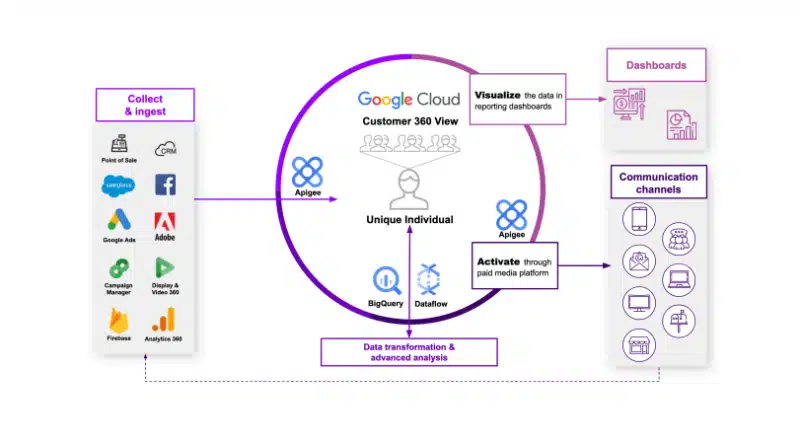How to move to a first-party data marketing strategy
It's time for marketers to consider moving away from third-party data strategies.
Most marketers are well aware of the increase in privacy regulations over their data collection activities. These laws, such as the GDPR and CCPA, are designed to protect the privacy of consumers. But they’re also causing marketing teams to shift away from strategies centered on third-party data.
“The core of the shift is really moving from targeting consumers using third-party data to knowing consumers very well,” said Giusy Buonfantino, VP of CPG Industry Solution at Google Cloud, in her MarTech presentation.
She added, “Personalize experiences and do it in a way that’s privacy-centric, protecting the choices of the consumer.”
Overreliance on third-party data and a lack of transparency decrease consumer trust in brands, part of the reason this shift is needed. Brands need to deliver personalized experiences based on the data their audience consents to share.

Making the change in your data strategy
“Do you know how reliant you are on third-party data overall?” said Brad Herndon, then of Accenture Interactive, in the same MarTech session. “Because we often default to cookies here, but it’s beyond cookies now.”
These changes have the potential to disrupt business marketing activities on multiple levels, so it’s important to get a full understanding of their impact. According to Herndon, brands would be wise to grasp the impact of these changes and determine the monetary implications.

Here are some first steps brands can take to shift their third-party data strategies.
Inventory third-party tags and choose replacements. Once your brand has decided to adopt a first-party data platform, review the tags you have in place relying on third-party information. Review the options for their best replacements.
Build a singular customer ID system that can scale and support living profiles. Marketers should avoid leaving current customers behind amidst these transitions. Make sure these customers are matched to unique IDs to help their online profiles live in the new environment.
Deliver omnichannel customer experiences. Brands should focus on delivering great customer experiences across every touchpoint. This will help build consumer trust and provide marketers with relevant first-party data.
Get ahead of changing compliance and privacy requirements. Privacy laws are here to stay. Stay ahead of the curve by adopting a data collection infrastructure that respects consumer privacy.
See the full presentation from our MarTech conference here (free registration required).
Identity resolution platforms: A snapshot
What it is. Identity resolution is the science of connecting the growing volume of consumer identifiers to one individual as he or she interacts across channels and devices.
What the tools do. Identity resolution technology connects those identifiers to one individual. It draws this valuable data from the various channels and devices customers interact with, such as connected speakers, home management solutions, smart TVs, and wearable devices. It’s an important tool as the number of devices connected to IP networks is expected to climb to more than three times the global population by 2023, according to the Cisco Annual Internet Report.
Why it’s hot now. More people expect relevant brand experiences across each stage of their buying journeys. One-size-fits-all marketing doesn’t work; buyers know what information sellers should have and how they should use it. Also, inaccurate targeting wastes campaign spending and fails to generate results.
This is why investment in identity resolution programs is growing among brand marketers. These technologies also ensure their activities stay in line with privacy regulations.
Why we care. The most successful digital marketing strategies rely on knowing your potential customer. Knowing what they’re interested in, what they’ve purchased before — even what demographic group they belong to — is essential.
Dig deeper: What is identity resolution and how are platforms adapting to privacy changes?
Contributing authors are invited to create content for MarTech and are chosen for their expertise and contribution to the search community. Our contributors work under the oversight of the editorial staff and contributions are checked for quality and relevance to our readers. MarTech is owned by Semrush. Contributor was not asked to make any direct or indirect mentions of Semrush. The opinions they express are their own.
Related stories